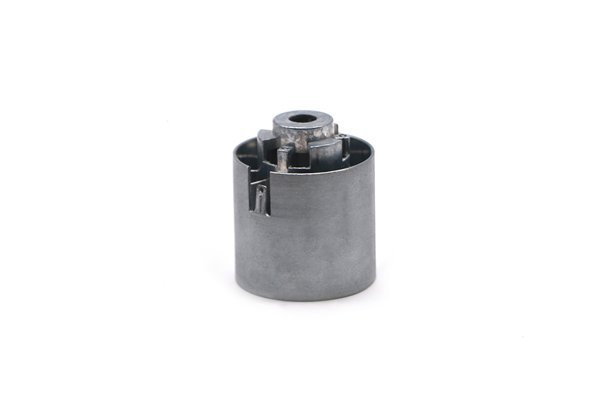Did you know that even a slight deviation in the dimensions of a threaded hole can lead to significant failures in mechanical assemblies? According to industry reports, poor thread accuracy is one of the leading causes of assembly malfunctions, affecting everything from machinery to consumer products. This highlights the importance of precision in CNC machining, especially in threading operations. In this blog post, we will delve deep into how to ensure the accuracy of threads during CNC machining to meet stringent industry standards.
Understanding CNC Machining and Its Importance
CNC (Computer Numerical Control) machining involves the use of computer-controlled machines to remove material from a workpiece to achieve the desired dimensions. This technology has revolutionized how parts are manufactured, allowing for high precision, repeatability, and efficiency. The significance of CNC machining cannot be overstated, particularly when it comes to producing threaded components, which are critical in a wide array of applications from automotive to aerospace and beyond.
The Basics of Threading in CNC Machining
Threading is the process of creating helical grooves on the surface of a cylindrical object. These threads can be internal (like those found in nuts) or external (like those on bolts). The primary challenge in threading is to ensure both dimensional accuracy (thread diameter, pitch, and depth) and geometric accuracy (circularity, straightness, and position).
Types of Threads
Key Factors Affecting Thread Accuracy
To produce high-accuracy threaded components, several critical factors must be considered:
Techniques to Improve Thread Accuracy
Now that we understand the factors affecting thread accuracy, let’s explore some techniques to improve it.
Utilizing advanced tool designs such as carbide or coated tools enhances wear resistance and thermal stability. Tools with optimized geometry can increase chip removal rates, leading to shorter cycle times and better accuracy.
Using CAD (Computer-Aided Design) and CAM (Computer-Aided Manufacturing) systems helps in simulating threading processes before actual machining. This allows for identifying potential issues and optimally configuring cutting parameters.
Every thread type has optimal machining parameters that need to be experimented with and fine-tuned. Utilizing feedback from initial runs to adjust feed rates and spindle speed can lead to significant improvements in accuracy.

Thread gauges are tools specifically designed to measure thread dimensions. Using a combination of thread plugs and ring gauges ensures that both the internal and external threads are within specification before the final inspection.
The Role of Quality Control in Thread Accuracy
Quality control (QC) is an essential aspect of any manufacturing process, especially in CNC machining. Implementing a robust QC process can help catch errors early and ensure every produced thread meets the required standards.
In-process inspection should be incorporated during machining to monitor the dimensions continuously. Using fixtures or dedicated measuring tools ensures that production stays within tolerances.
Final inspections should employ multiple techniques, including visual inspections, dimensional checks, and functional tests. Documenting these inspections creates a history for future reference and helps identify any patterns that might suggest equipment malfunctions or process failures.
Troubleshooting Common Threading Issues
Even with the best practices, problems can arise during the threading process. Here are common threading issues and troubleshooting techniques.
Issue: Variation in thread depth can arise from poor machine setup or tool wear.
Solution: Regularly check tool wear and replace tools as necessary. Ensure the CNC machine’s calibration is up to date. Proven software can help monitor and adjust thread depth dynamically.
Issue: Misalignment during setup can lead to skewed threads.
Solution: Ensure that the workpiece is securely clamped and aligned correctly within the CNC machine. Utilize alignment tools or devices to verify precise positioning.
Issue: A rough thread surface can lead to improper fitting in assemblies.
Solution: Optimize cutting parameters, use appropriate coolants, and consider the use of a secondary finishing operation if necessary.
Case Study: Achieving Thread Accuracy in Aerospace Applications
A notable case study in ensuring thread accuracy comes from the aerospace industry, where even a minor error can lead to catastrophic failures. A leading aerospace manufacturer conducted a comprehensive review of their threading process.
Steps Taken:
Results:
The aerospace manufacturer reported a 40% reduction in defective threaded components and a substantial increase in overall productivity. By focusing on threading accuracy, they not only enhanced product reliability but also significantly reduced costs related to rework and returns.
Ensuring the accuracy of threads during CNC machining is imperative for producing components that meet industry standards. By understanding the critical factors affecting thread accuracy—from machine setup and tool selection to material properties and inspection techniques—you can enhance your threading process significantly. Implementing advanced technologies, maintaining rigorous quality control, and proactively troubleshooting issues will lead to higher precision and reduced errors.
Remember, precision in threading is not just a matter of aesthetics; it’s a critical component in the functionality and safety of machined products. With the techniques and solutions discussed in this blog, manufacturers can minimize errors, improve quality, and build a reputation for excellence in their machining processes.
As CNC technology continues to evolve, staying ahead of industry standards in threading accuracy will not only lead to improved operational efficiency but also reinforce your commitment to quality. Always consider the long-term benefits of investing in better practices, technologies, and training that bring your threading processes up to par.






